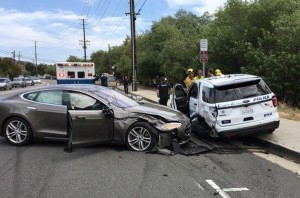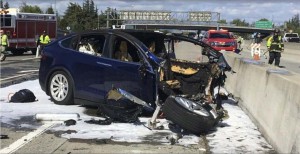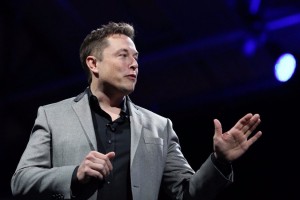The National Transportation Safety Board’s investigation into the crash of a Tesla Model X determined that seconds before the crash the vehicle was in Autopilot mode, accelerating and had no input from the driver to avoid the collision.
Walter Huang, 38, was killed on U.S. Hwy 101 in Mountain View, California, when his Model X slammed into a road divider, hit two other vehicles and then burst into flames, Huang, who according to his wife had complained previously about the failure of Autopilot in the same area before, was pulled from the vehicle before it caught on fire.
Huang had the vehicle in its semi-autonomous Autopilot mode for nearly 19 minutes before the crash and it was set at 75 miles an hour. However, due to traffic in front of him, the vehicle was traveling at 65 mph before the vehicle in front of him moved, allowed the Model X to accelerate to the selected speed.
It continued speeding up until impact near the exit to State Highway 85. According to the NTSB report, the Tesla veered to the left seven seconds before impact, and “for the last 6 seconds prior to the crash, the vehicle did not detect the driver’s hands on the steering wheel.”
(Family of Tesla Model X fatality hires law firm, plans to sue. Click Here for the story.)

A Tesla Model S crashed in Laguna Beach, California. It's part of a series of recent crashes that has safety advocates criticizing the name Autopilot.
Huang’s family hired law firm Minami Tamaki to explore its legal options. The firm said its preliminary review suggested the Autopilot feature was defective. It also noted it found complaints about the system from other Tesla owners involving navigational errors.
“(Our) preliminary review indicates that the navigation system of the Tesla may have misread the lane lines on the roadway, failed to detect the concrete median, failed to brake the car and drove the car into the median,” Minami said.
The final moments recorded by the vehicle offered the following information:
- Eight seconds before impact, the Tesla was going 65 MPH as it followed another vehicle.
- Seven seconds before impact, the Tesla began “a left steering movement,” meaning it veered to the left.
- Four seconds before the crash, the Tesla no longer detected a vehicle in front of it, and with the cruise control engaged and set at 75 mph, it began speeding up, from 62 mph three seconds before impact to 70.8 mph at the time of impact.
According to the report, “As the Tesla approached the paved gore area dividing the main travel lanes of US-101 from the SH-85 exit ramp, it moved to the left and entered the gore area.” A gore area isthe divide between the exit ramp and the thru lanes on the highway. In this case it was differentiated with a series of white lines or stripes.
(Click Here for details about Tesla being hit with NLRB complaints over firings.)
The Tesla sped through the gore area and hit a previously damaged crash attenuator at the end of a concrete median barrier head on traveling about 71 mph, according to the NTSB report. It also noted that not only did the driver not have his hands on the steering wheel in the final six seconds before impact, but there was “no precrash braking or evasive steering movement detected.”
A Tesla spokesperson previously told TheDetroitBureau.com, “makes clear that although every vehicle has the hardware necessary for Full Self-Driving, actual ‘self-driving’ functionality is dependent on extensive software validation and regulatory approval.”
But Musk continues to brag auto the technology and recently told analysts and reporters participating in a teleconference covering Tesla’s first-quarter earnings that a fully autonomous version should be ready to activate next year.
The company is currently being attacked for simply using the name “Autopilot.” Critics claim that the name implies that the driver can simply set it and forget it. Tesla maintains that owners do not believe that and are warned not in the owner’s manual, as previously noted, but also when buying and receiving their new vehicle.
(To see more about safety groups wanting the name Autopilot banned, Click Here.)
Two safety groups have filed complaints about the sytem. The Center for Auto Safety, or CAS, and Consumer Watchdog asked the Federal Trade Commission investigate how Tesla not only named the system, but also how it promotes its semi-autonomous system.



Crash Pilot is the far better name. From the report, the facts seem to indicate this Crash Pilot system allowed the driver affirmatively not to pay attention and to take his hands off the wheel repeatedly, including in the final moments before the horrific crash. Further, it allowed a vehicle speed of 10 over the limit to be set, even with data saying the driver did not have his hands on the wheel. The description also seems to debunk Tesla’s statements that somehow the unprepared crash barrier was the cause–the Model X was Crash Piloted to it regardless.
Yet more interesting would be to correlate the crash data and time stamps with cellular records. It might connect the dots further on what was going on during the no hands on wheel repeated periods, and driver apparently having no awareness of the upcoming wreck–given no evasive maneuvers were made.